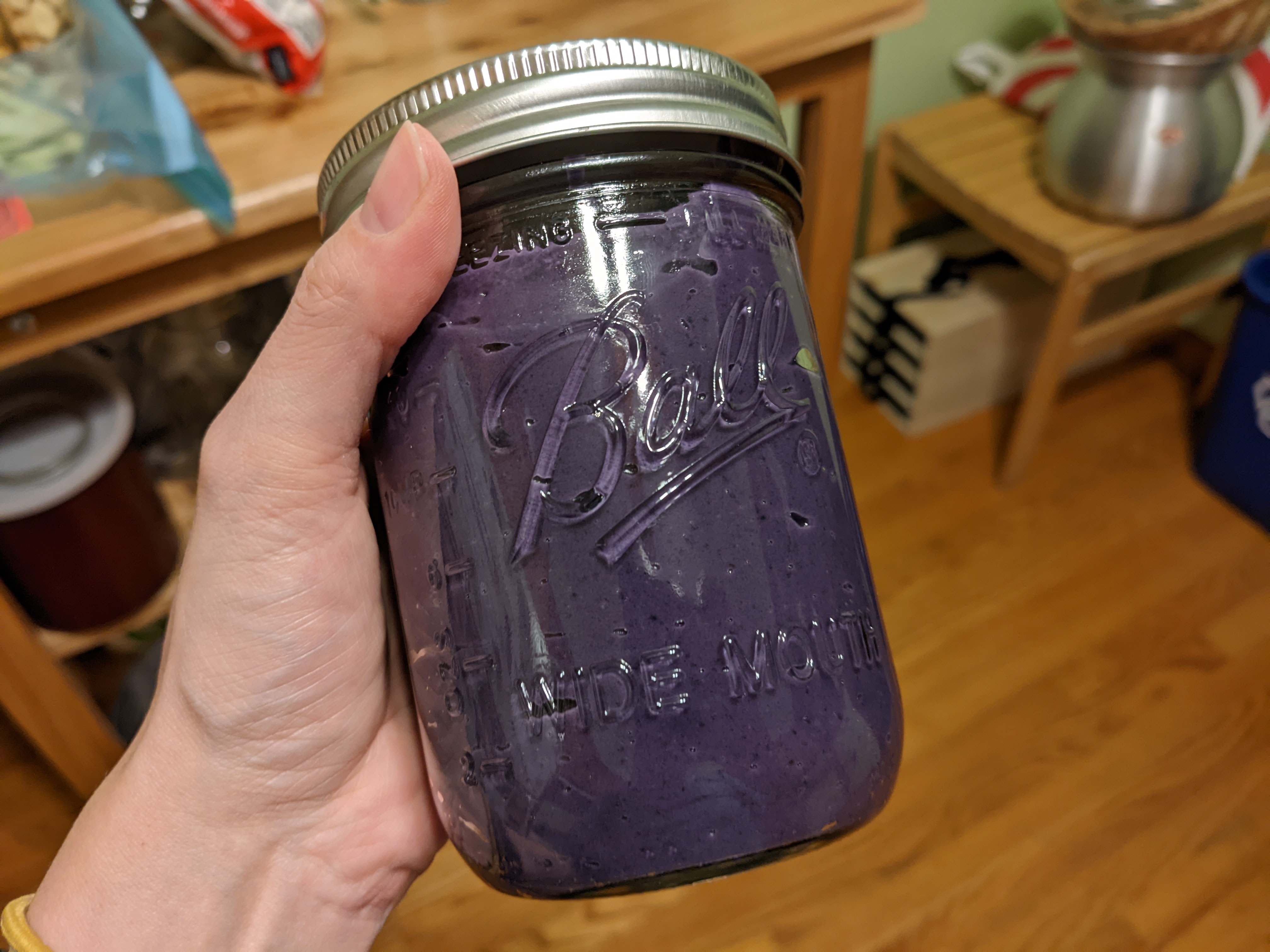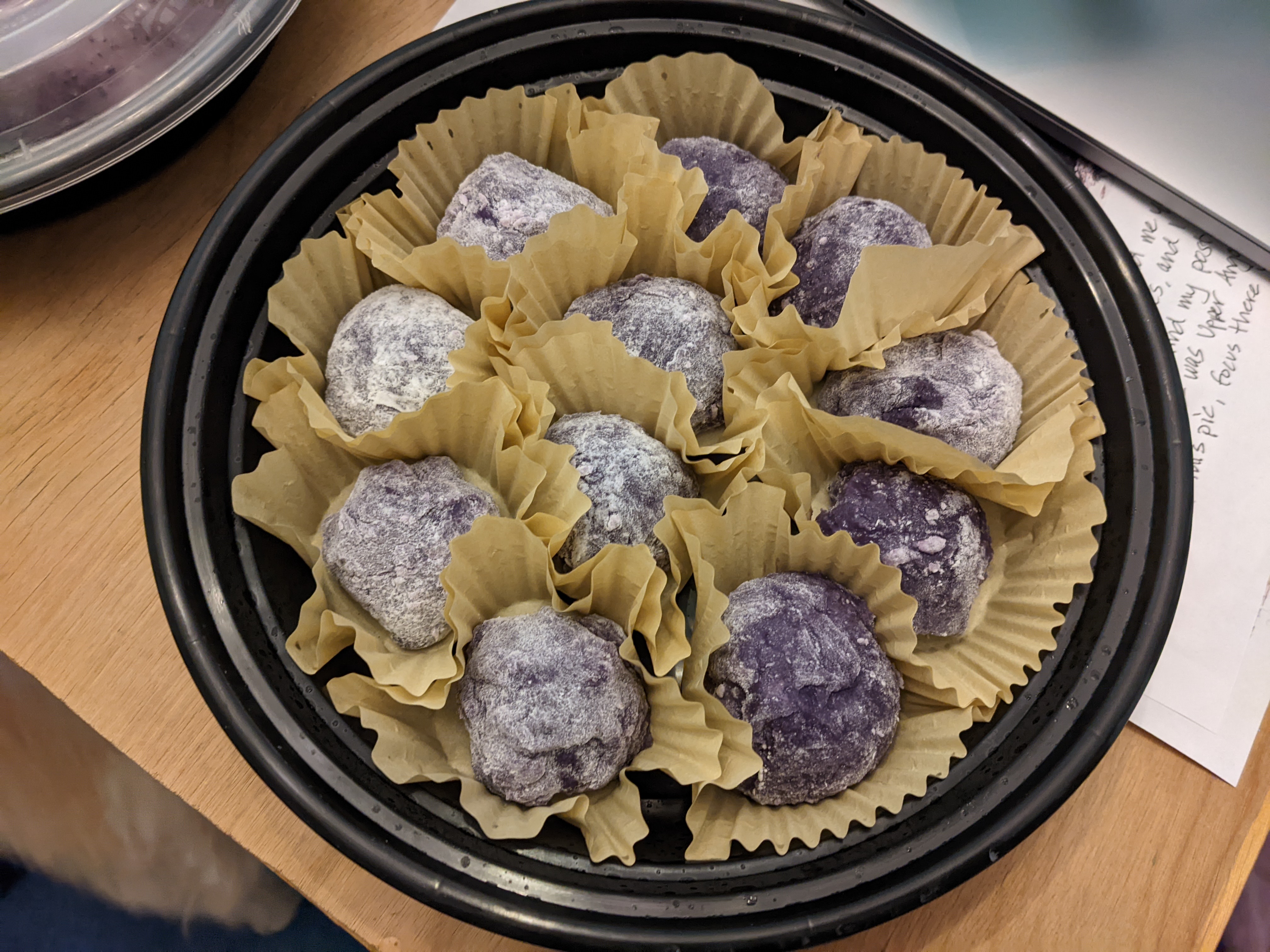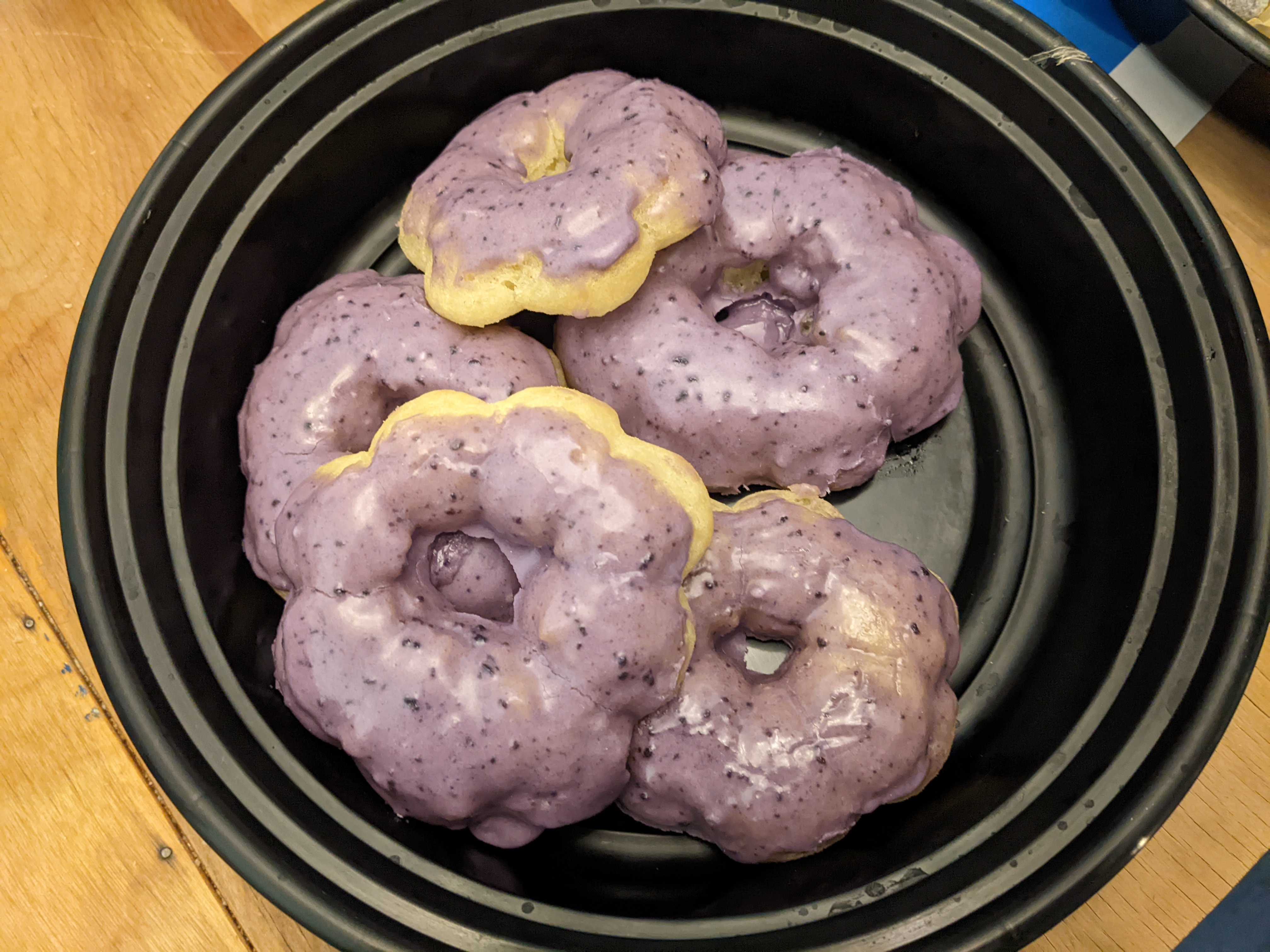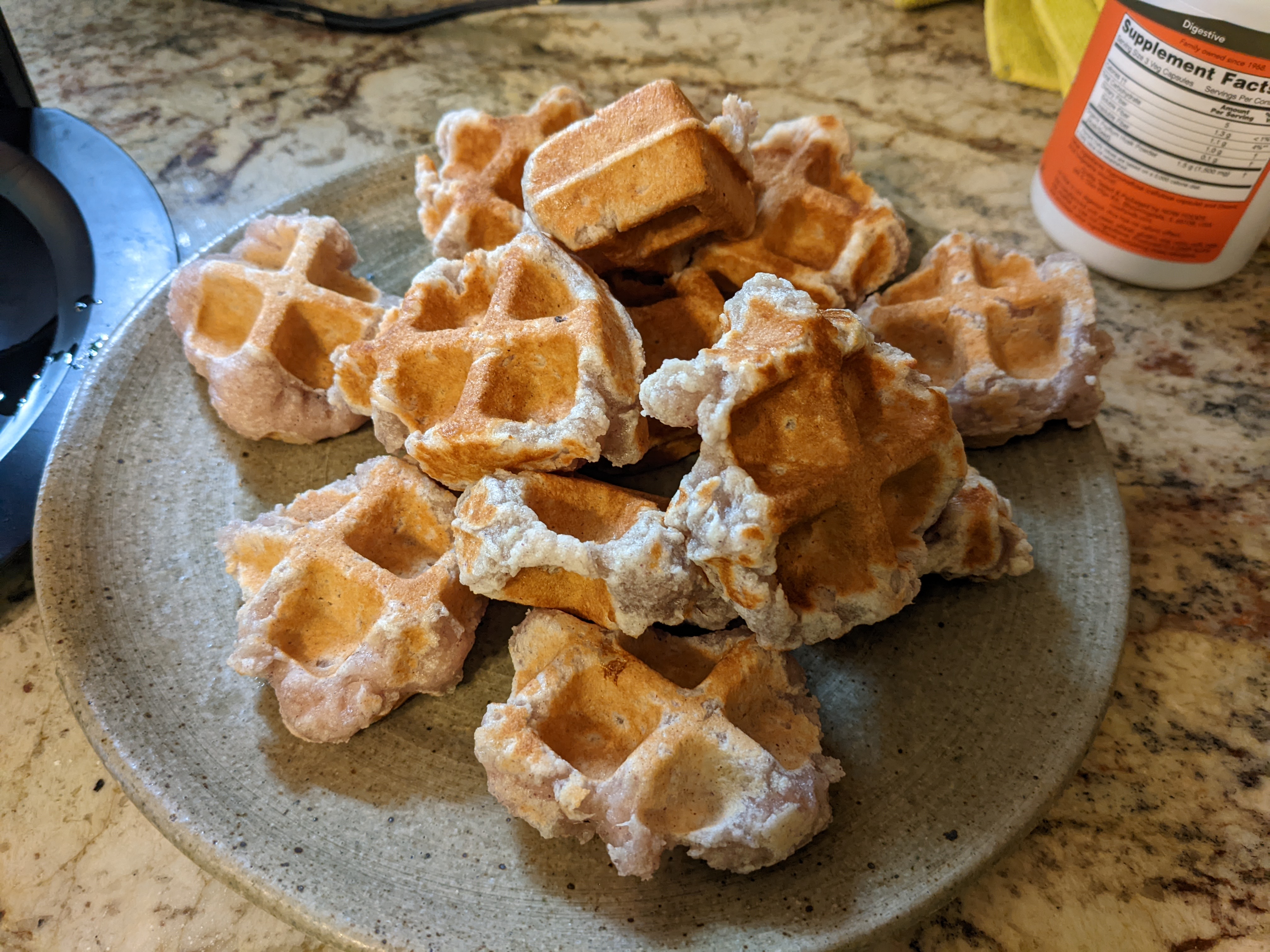No Half Measures
08 Mar 2022
Apparently 2021 was the year of ube, and I’m late to the party. Seriously, have you seen this yam? Vibrantly purple, giving everything you use it in a lovely lavender-to-violet color. I learned that some of this is not due to the ube directly, but rather to the inclusion of ube extract, which I both embraced and also see as slightly cheating. Since I went to the trouble of making ube halaya from dried ube, I am determined to use it even if the recipe doesn’t call for it!
The process of making ube halaya can be summed up as: stir. After rehydrating, you add the canned milks and just stir for about 45 minutes until it reaches the right consistency. My first goal was to make ube mochi, so I wanted it to be on the stiffer side for the filling.
Making halaya wasn’t awful - but it is an arm workout! Luckily 4 oz of dried ube made slightly more than two pints of halaya, because I have big plans!
First off, ube mochi! I recognize that I had no idea what I was doing, and also hadn’t found any potato starch so I used more mochiko to help me roll out the mochi - which was rough. The mochi was still very sticky even after dusting, and it took two of us to get the filling inside.
The finished mochi looked a little rough on their own, but dressed up in some cupcake liners and allowed to settle into a smoother shape, they were slightly prettier! They tasted quite good, and had the right texture. I’ll have to try again and spend a little more time on the shaping and presentation.
Next up was mochi donuts! I didn’t set out to make these, but managed to incorporate ube in the glaze - and they turned out wonderful! Slightly misshapen, but the texture and flavor was right on.
Most recently, I made ube mochi waffles for my post-baby shower brunch. Not only did I want to incorporate my ube halaya into another recipe, but also I was looking for an interesting brunch centerpiece that was also gluten free. Hurray for mochiko! Unfortunately I didn’t capture any evidence of these waffles, because they were delicious and we were hungry. They had a very pleasant chew that regular waffles don’t have, and a subtle flavor that I almost preferred to eat alone or only with butter. Cleaning the waffle maker after cooking them was a struggle - the batter set like cement on the outsides, and I found myself scraping it off with a butter knife!
Several weeks later, I re-discovered in my cabinet this package of taro mochi puffs - by which the manufacturer might have actually meant taro this time; as described in this post, they’re usually confused. This is only exacerbated by the popular “taro boba” incorporating the less-sweet qualities of taro and the bright purple of ube!
Either way, these puffs were delightful. The batter was thick, and I’m sure if I didn’t have a belgian waffle maker they would have spread out more. As they were, each one was only two bites of waffle, with the characteristic chew of mochiko.








